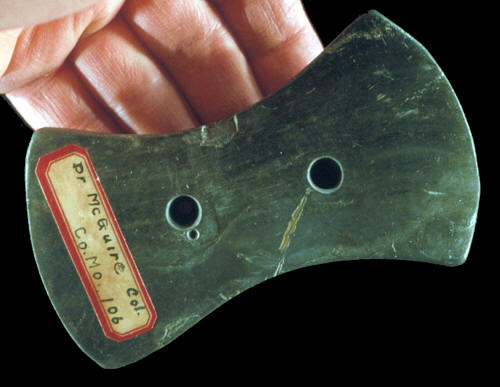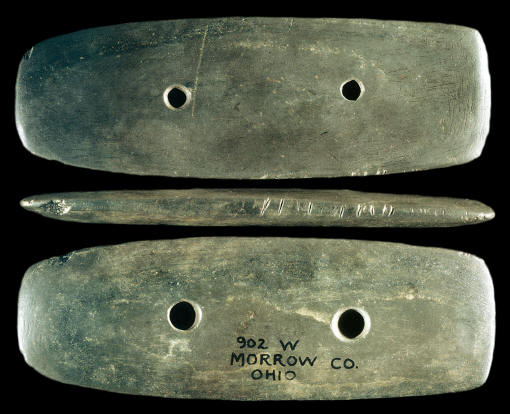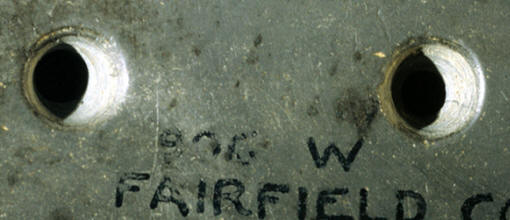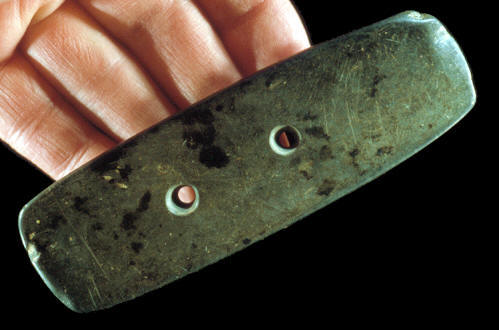|
|
|
Gorgets were made from many different materials, but most of them were made of slate. Some of the other materials used were soapstone, schist, clay-stone, chert, limestone, canal coal, shell and bone. Only a very small percentage of them were made from hard stone such as granite or quartz. The people who were making gorgets chose mostly softer materials that fractured in sheets along natural lamination lines. |
|
|
Gorgets are not very difficult to make. First, an outline of the form is scratched on the surface of the material. Then it is ground and polished into shape. A small number of gorgets have no holes but the usual two or more holes were drilled with a flint drill. Most examples were drilled from both sides with the cone shaped holes meeting in the center. Some gorgets were drilled from one side only. |
|
|
|
|
Gorgets have been found in a wide range of sizes. Moorehead (1917) suggests a size range of from just under 2 inches (5 cm) for the smallest examples to just above 9 inches (23 cm) in length for the longest. It's interesting that he gives an average length of 4 1/2 inches for gorgets found in New York state, the area where he lived. This is the exact average length for the six "normal size" gorgets illustrated in this article. But the other example, a constricted center gorget that represents a highly developed design, is uncommonly large. It's made of cannel coal and measures approximately 11 inches (28 cm) long. So the size range for gorgets is probably closer to 12 inches (30.5 cm) for the largest examples. |
|
|
|
|
There are many different types of gorgets. They have been found in as many different shapes as can be imagined. Moorehead (1910) illustrated almost fifty different shapes of gorgets drilled with two holes. The most common form of gorget is rectangular in outline with slightly excurvate sides and ends. They are flat on both faces and drilled with two holes. Some of the more uncommon types are boat-shaped, expanded-center, clipped-corner, concave-ended, expanded-center, quadri-concave, reel, humped and semi-keeled. |
|
|
|
|
Most gorgets are plain and do not have any engraved lines. But there are exceptions. One of the more common engravings is in the form of short parallel lines along the edges that are often referred to as tally marks. Other gorgets may have a series of seemingly random lines or a simple pictograph. |
|
|
|
|
Gorgets do not exhibit any heavy use wear, like the patterns seen on chopping, digging or food processing tools. In fact, most gorgets show very little wear. Even the drilled holes, in most cases, were apparently not under a very high amount of stress or abrasion. So there remains a mystery of how they were used. The answer, as many authors have suggested, is that they were probably used, displayed or worn in several different ways. So, the issue remains a little mysterious but that's not unusual. Without a living culture to communicate with or evidence in the form of pictures or text it's sometime all but impossible to have the final answer. But theories abound. |
|
|
"REFERENCES"
1892, Moorehead, Warren K.,
"Primitive Man In Ohio," p. 157. |
|





